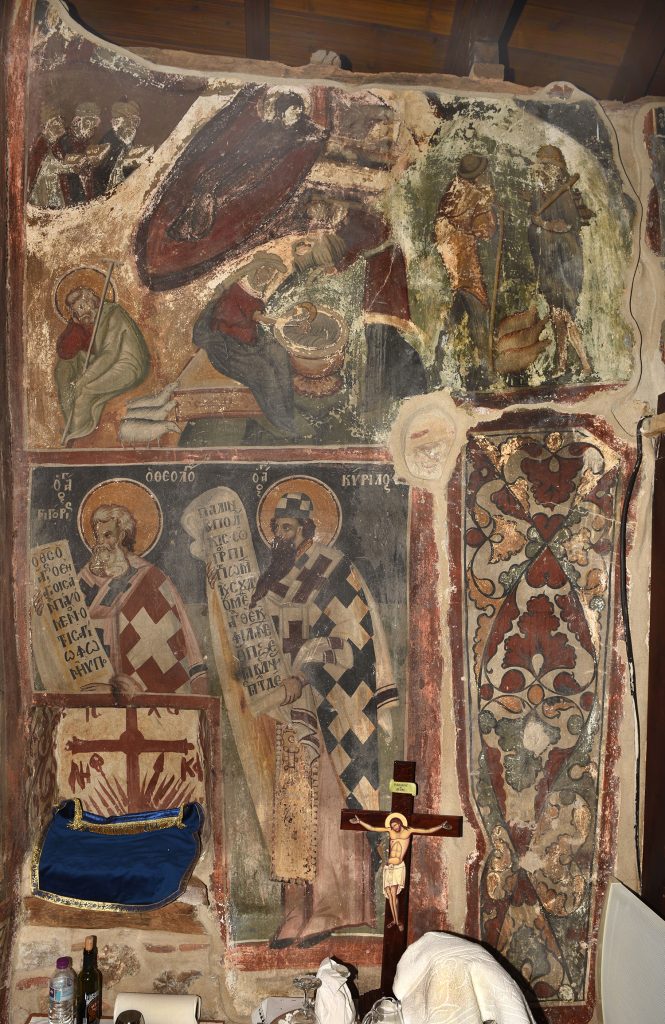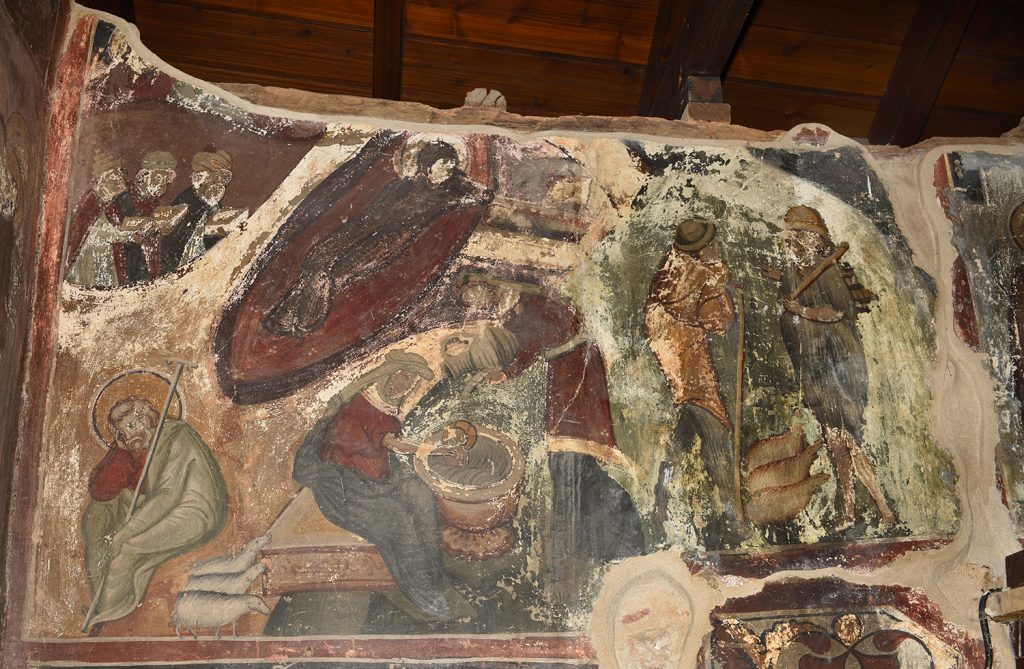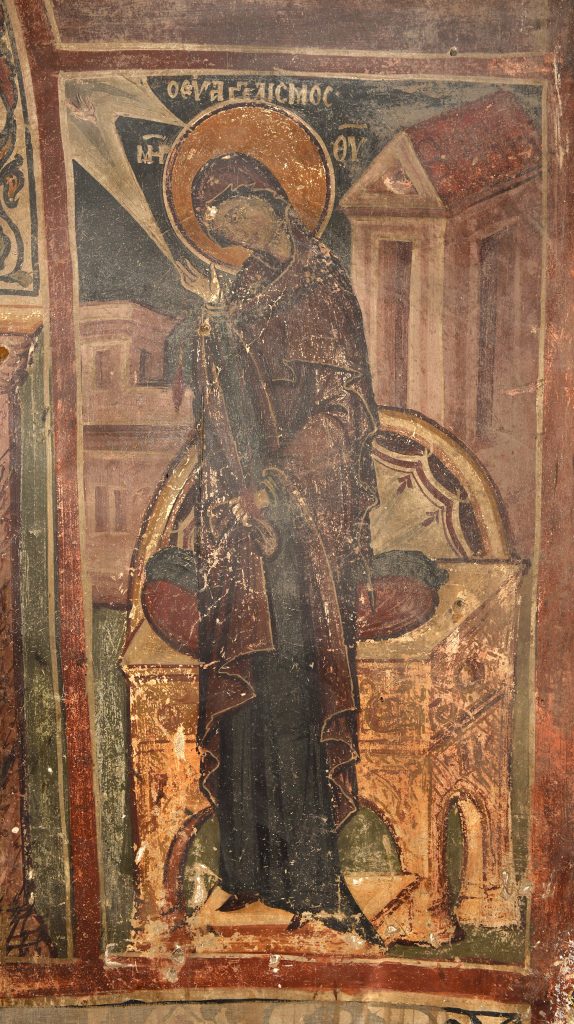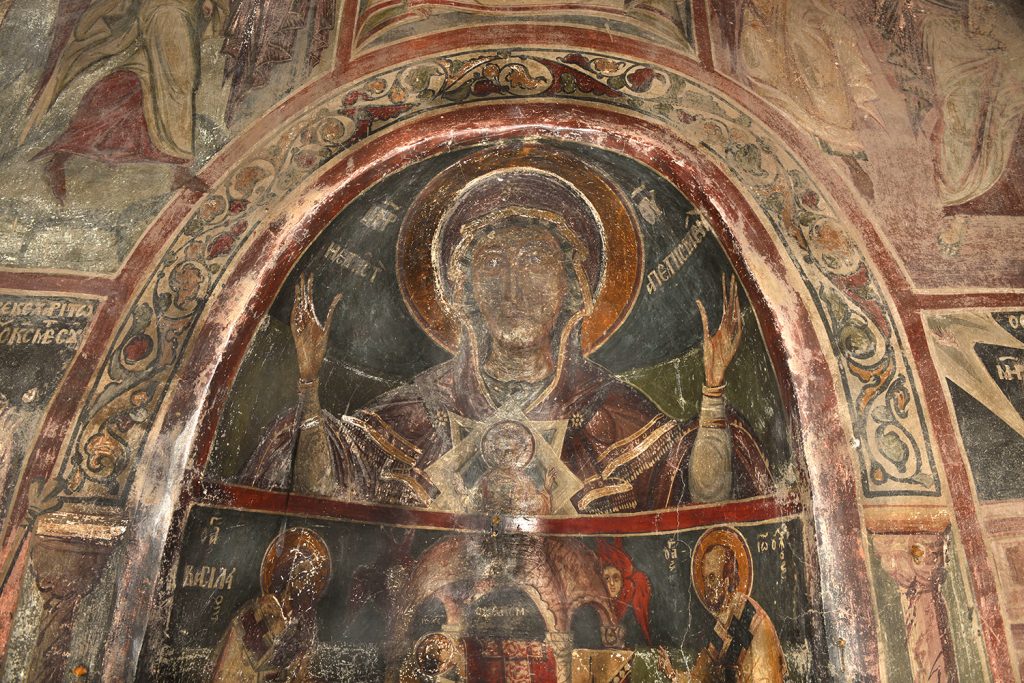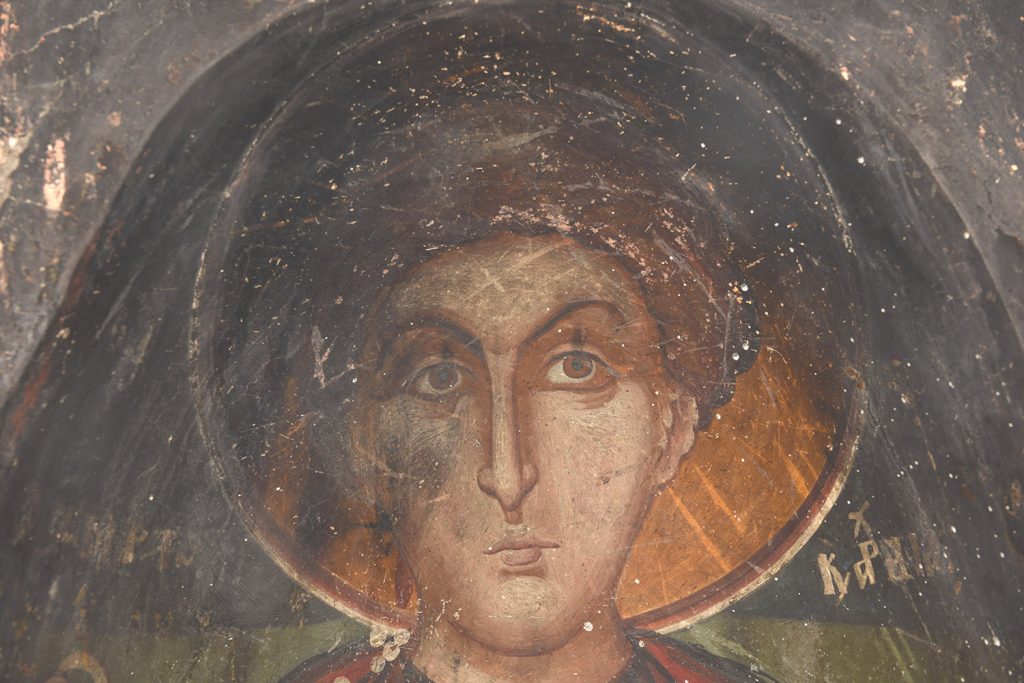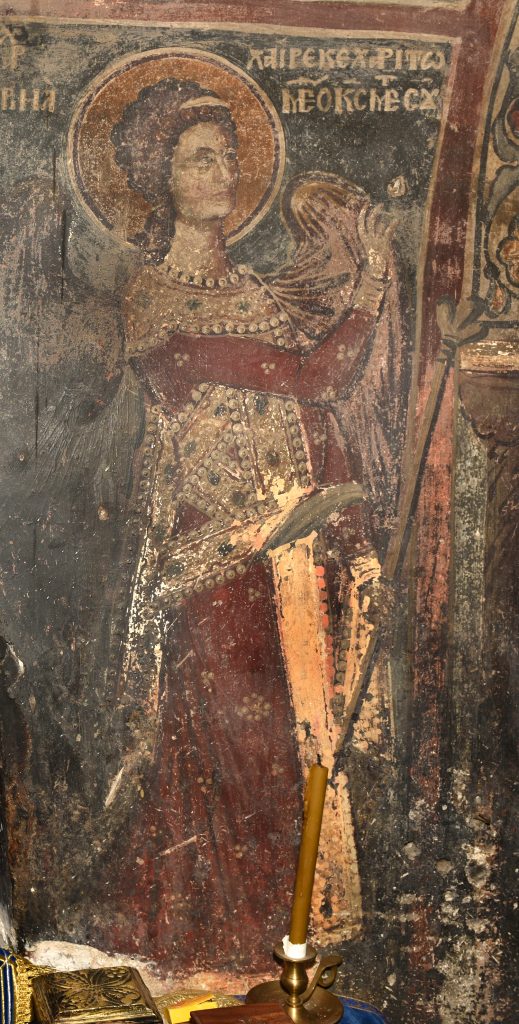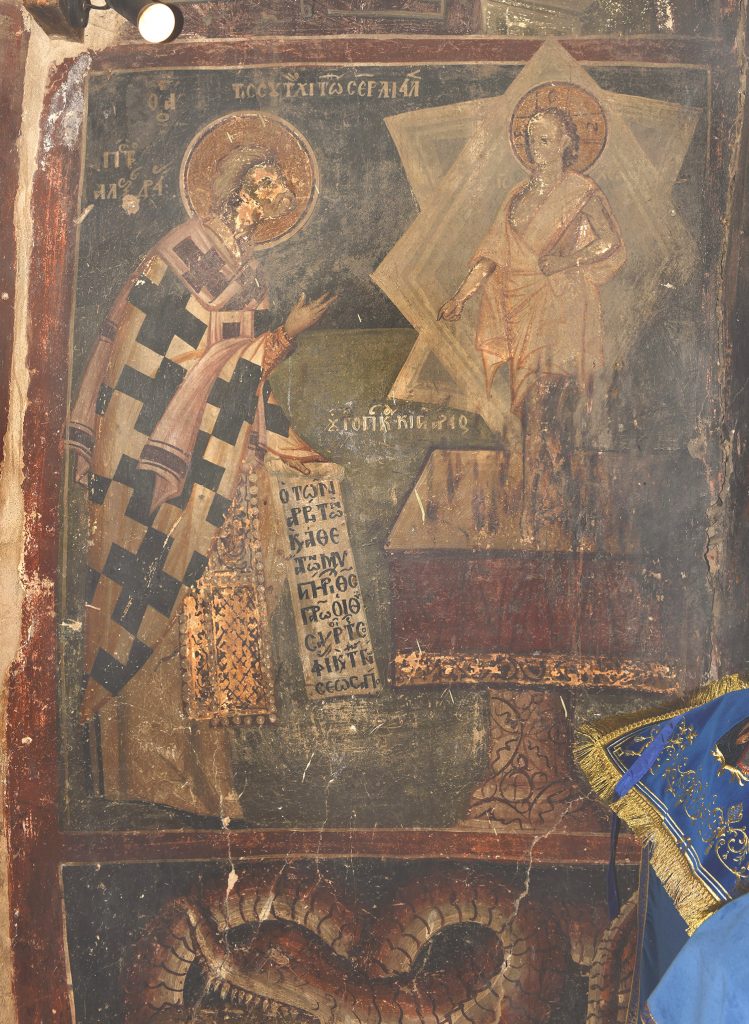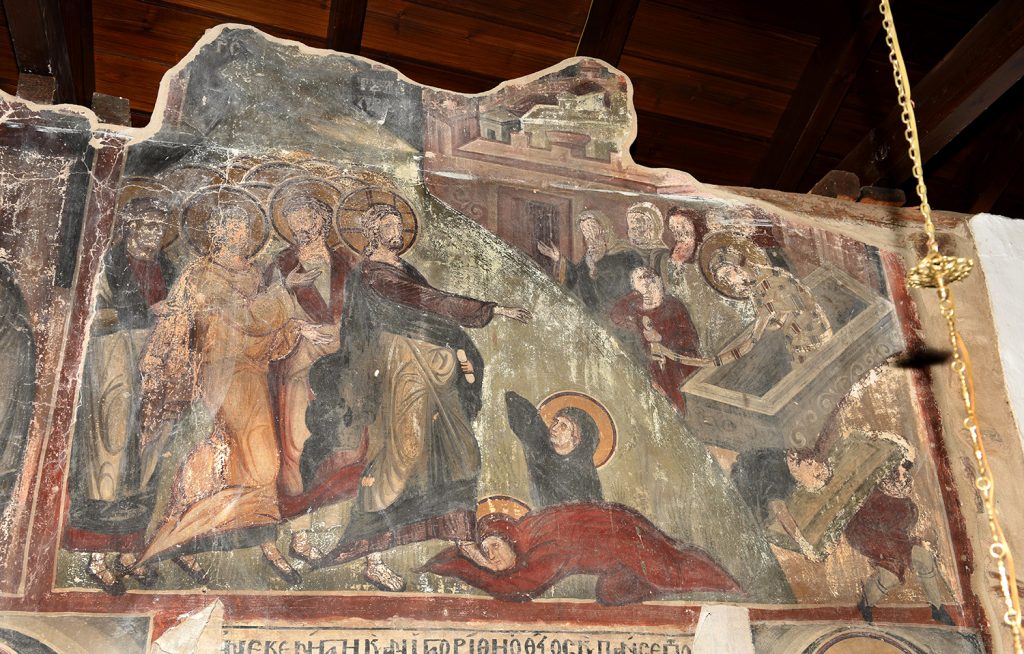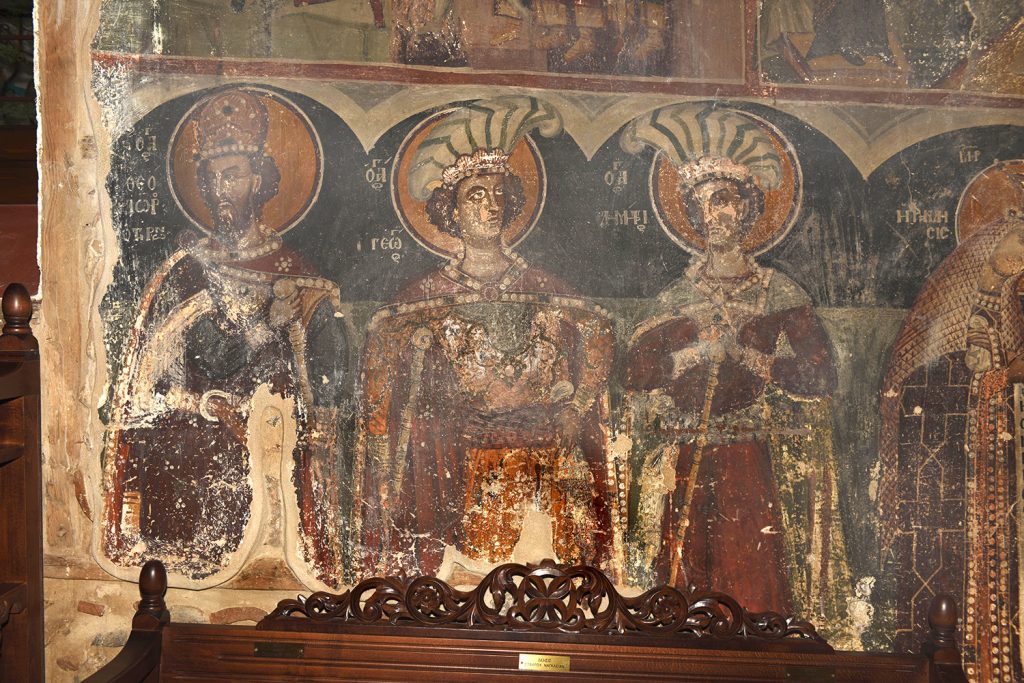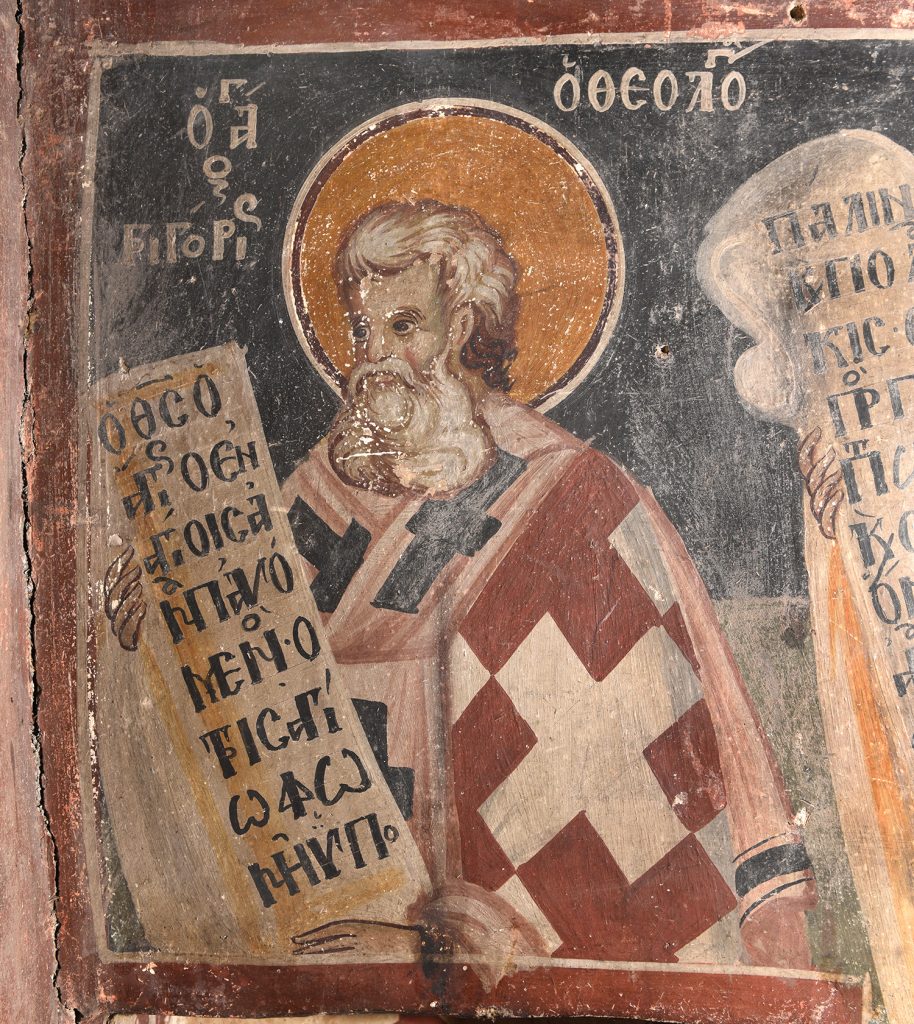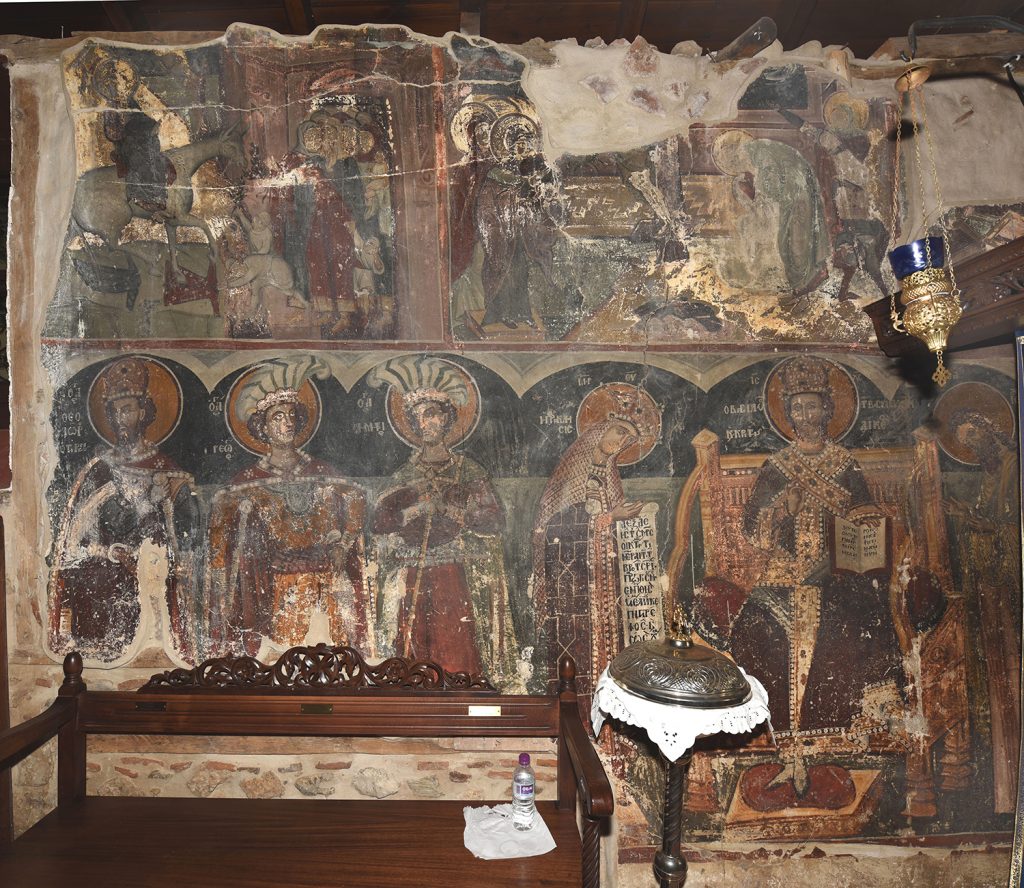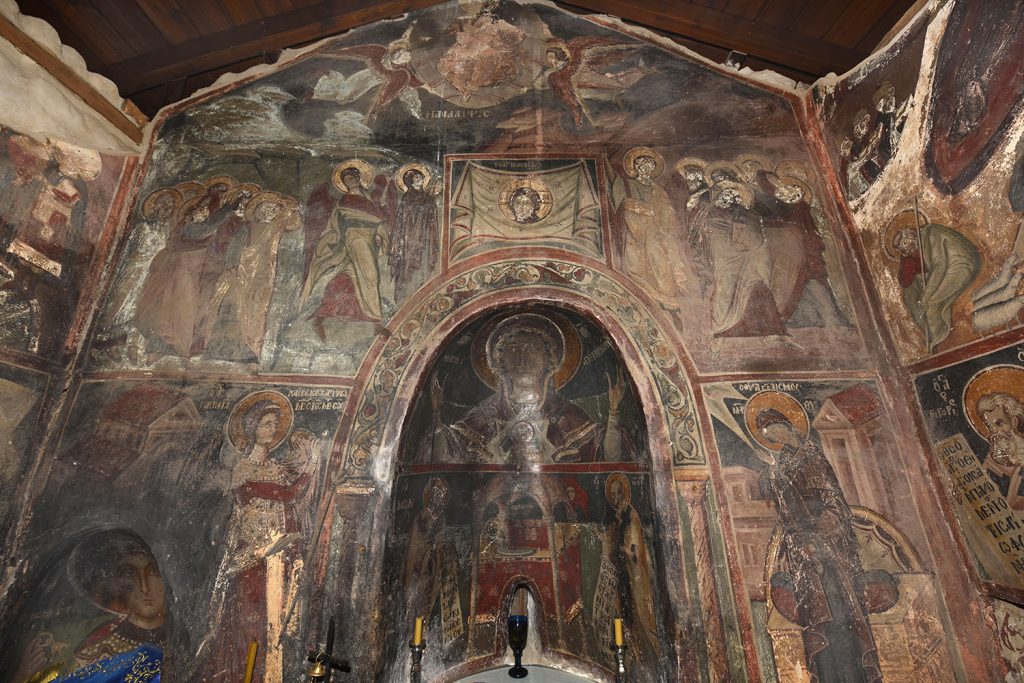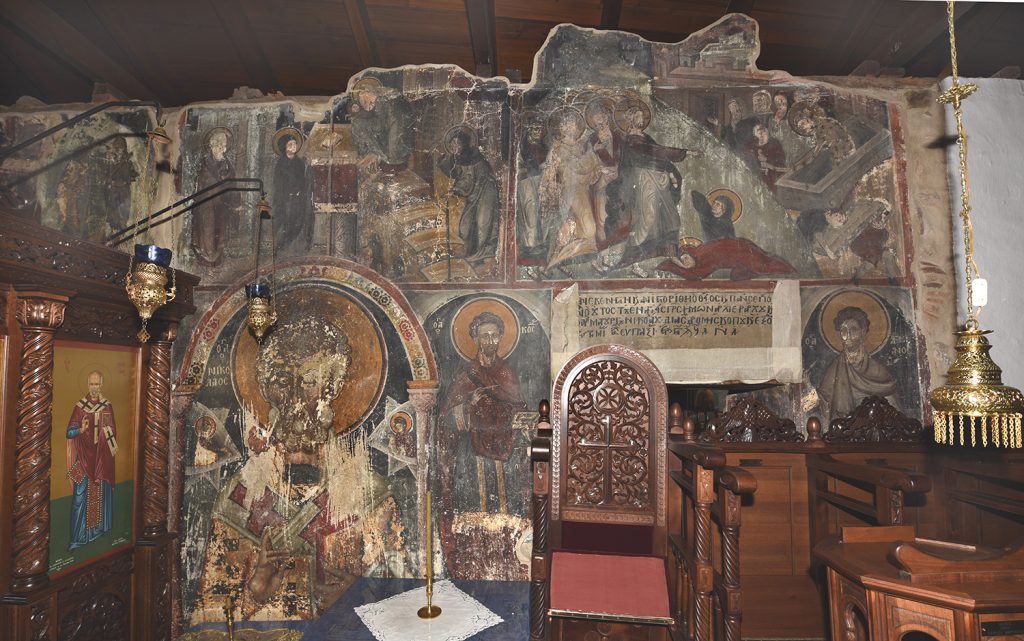
St. Nicholas Church of Nun Eupraxia
St. Nicholas Church of Nun Eupraxia is situated in the central part of Kastoria, at the corner of two streets – Βορείου Ηπείρο and Θεσσαλίας.
The only information we have about the church comes from the donor’s inscription above the door on the southern wall mentioning the year of the church construction – 1486, as well as the name of the donor, nun Eupraxia.
The church is small, with a single nave, and with no particularities in the plan. On the eastern wall there’s a small apse and a prothesis niche. The entrance used to be on the southern wall of the naos but the remains of the original building have been integrated in the plan of a new building with a room to the west, shaped like an elongated narthex. The western wall of the original church is destroyed. The obliqueness in the upper part of the painted frames on the eastern wall suggests that the building wasn’t vaulted.
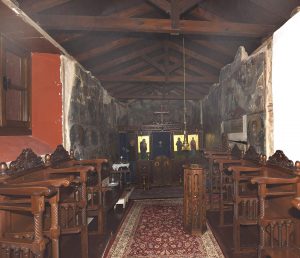
The interior of the St. Nicholas Church of Nun Eupraxia, view from the west
The fresco program is traditional of the small one-nave post-Byzantine churches. In the altar apse there is a depiction of the Theotokos and Child and Officiating Church Fathers with St. John Chrysostom and St. Basil the Great. On the eastern wall above the apse are depicted the Ascension and the Holy Mandylion as well as the composition of Annunciation at both sides of the apse. In the prosthesis niche there is a depiction of St. Stephan.
The upper register in the naos is occupied by the Great Feasts: Nativity, Presentation of Jesus in the Temple and Raising of Lazarus on the southern wall; Entry into Jerusalem, Crucifixion and Descent into Hell on the northern wall.
The lower zone represents St. Gregory the Theologian, St. Cyril of Alexandria, St. Cosmas, St. Nicholas, St. Damian on the southern wall and St. Theodore Tyron, St. Demetrius, St. George, Deesis with Christ King of Kings and Righteous Judge and Theotokos Queen of All, the Vision of St. Peter of Alexandria on the northern wall.
The specific features of the mural program of St. Nicholas Church of Nun Eupraxia are not to be found in its contents but in its style and in some iconographic particularities, typical of the Kastoria artistic circle of the 15th-16th cc. For instance, the depiction of Christ King of Kings and Theotokos Queen of All in the Deesis and of the warrior saints in aristocratic attire, the fan-shaped back of the throne of the Theotokos on the Annunciation scene, the detailed secondary characters in the scene of the Nativity, the representation of a scroll with a liturgical text and of hell as a monster in the Vision of St. Peter of Alexandria.
Greek.

Entry into Jerusalem, St. Nicetas Church near Čučer and St. Nicholas Church of Nun Eupraxia in Kastoria, details
St. Nicholas Church of Nun Eupraxia in Kastoria is one of the monuments suggested by G. Subotić to be works of the chief master, founder of the leading atelier in the Kastoria artistic production in the 1480-90s. The surviving monuments suggest that the atelier was extremely active for some 4 years in the 1480s. The atelier brought forth numerous icon-painting teams that worked in different areas of the Balkan Peninsula by the end of the 1530s. Among the atelier works are the frescoes in the Old catholicon of Transfiguration monastery (Great Meteor, 1483), some of the frescoes in the Dormition Monastery (Treskavec, Macedonia, 1483/1484) and in St. Nicetas near the village of Čučer (Baniani) near Skopje (1483/1484), as well as the fragments in the church of Peter and Paul in Aiginio (Pieria, Greece, 1485) and the fragments in the destroyed church of St. Spyridon in Kastoria (end of 15th c.).
Tsveta Kuneva
Ορλάνδος, A. Τά βυζαντίνα μνημεία τής Καστορίας. Αρχείον τω̃ν βυζαντινω̃ν μνημείων τής Ελλάδος IV. Αθήναι, 1938, 167.
Πελεκάνιδις, Σ. Καστορία. Βυζαντιναί τοιχογραφίαι. Θεσσαλονική, 1953, πιν. 179-188.
Радоjичић, Св. Jeдна сликарска школа из друге половине ХV века. – В: Радоjчић, Св. Одабрани чланци и студиjе (1933-1978). Београд, 1982 (препечатано от Зборник Матице србске за ликовне уметности, 1, 1965), 267-268.
Garidis, M. La peinture murale dans le monde orthodoxe après la chute de Byzance (1450-1600) et dans les pays sous la domination etrangère. Athènes, 1989, 68-70.
Σίσιου, Г. Καστορίανα μνημεία. Καστορία, 1995, 87-90.
Δρακοπούλου, Ε. Η πόλη της Καστορίας τη βυζαντινή και μεταβυζαντινή εποχή (12ος – 16ος αι.). Ιστορία – Τέχνη – Επιγραφές. Άθήνα, 1997, 117-119.

